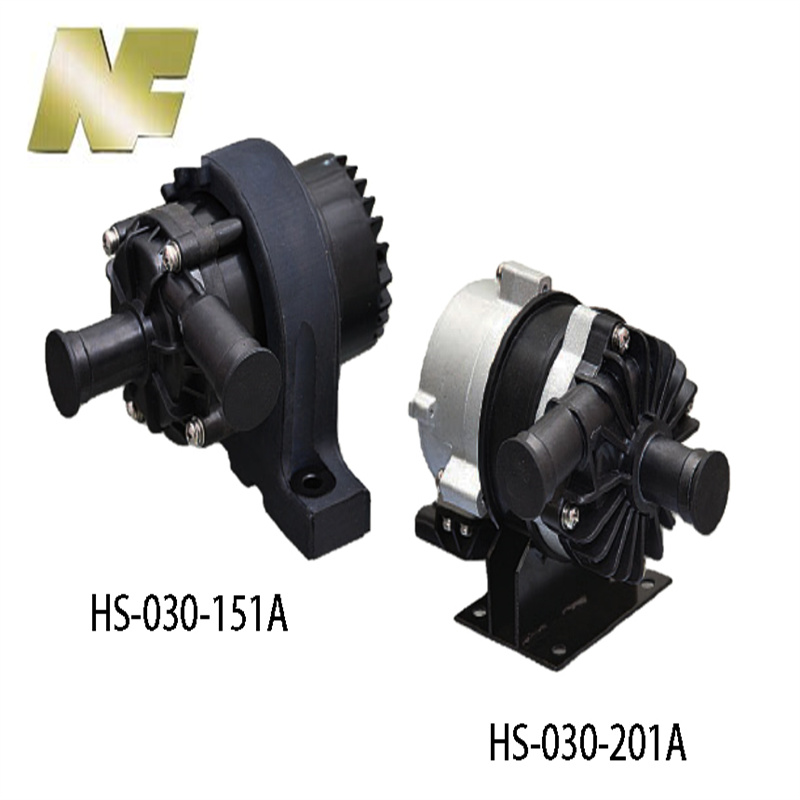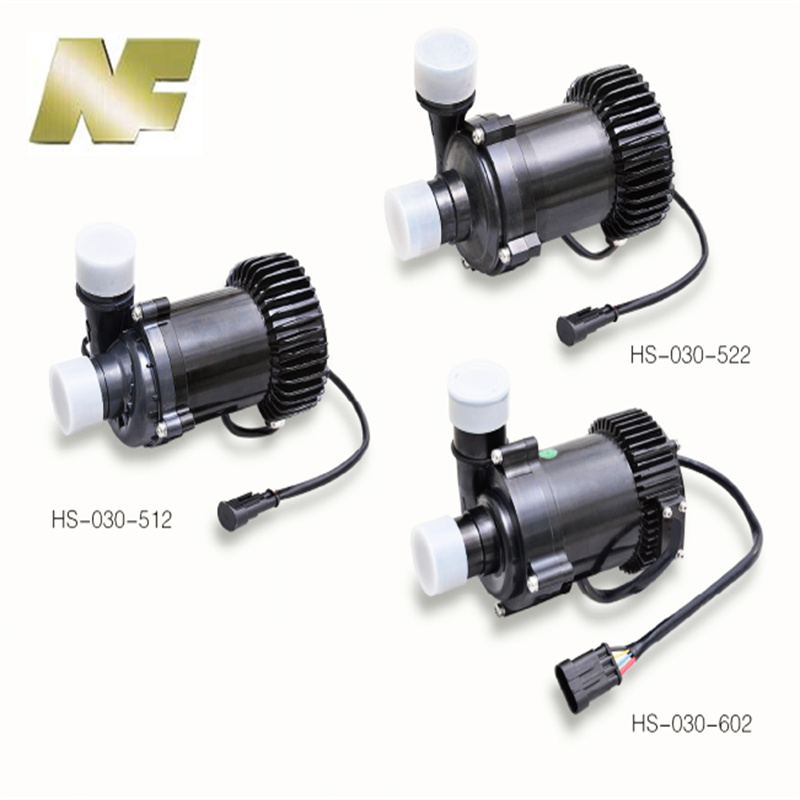Traditional engines also have cooling water circuits, but the cooling water circuits of new energy vehicles are actually very different. This chapter takes a look at how the cooling water interacts with various actuators and sensors on new energy vehicles.
Electronic water pump
To get the coolant flowing in each cooling circuit, of course a pump is needed. The engine drives the mechanical water pump due to the rotation of the engine shaft. In pure electric vehicles and hybrid vehicles, due to the decoupling of cooling requirements and motor shaft speed, electronic water pumps are used to meet more precise temperature control requirements.
The hydraulic part of the electronic water pump is not much different from the mechanical water pump. The main difference lies in the electric drive part of the electronic water pump. The rotation of the electronic water pump is provided by a brushless DC motor. The power of the motor ranges from 30W to 150W, which can basically cover most of the pure electric and hybrid models and thermal management architecture, except that the fuel cell stack will use a water pump of 200W and above. . There are also some water pumps that use brushed motors, but it is recommended to use brushless motors, which have longer life and less noise.
In addition to the DC brushless motor pump drive, other circuits can be added to the PCB printed circuit board of the EV electronic water pump according to functional requirements. The electronic water pump can use PWM control or LIN bus control (there is also CAN bus control).
LIN-controlled electronic water pumps are recommended for pure electric vehicles, because there are generally more water pumps and water valves used in the thermal management architecture of pure electric vehicles. If each water pump and water valve uses PWM control, the thermal management controller needs to provide Separate IO for pumps and valves. The LIN bus is enough to mount all the water pumps and water valves used in pure electric vehicles (LIN can be connected to 16 nodes).
According to the positioning of the model, intelligent Vehicle Cooling Dc Pumps and electronic water valves can also be considered. For example, on mid-to-high-end models, the use of intelligent thermal management actuators can also enrich these functions: voltage overvoltage/undervoltage warning, PCB overheating warning, Water pump stall monitoring, water pump overload warning, water pump idling detection, etc. Combined with the Internet of Vehicles function, it can also monitor the components of the thermal management system in the cloud in real time to achieve more specific high-end functions such as fault diagnosis, failure prediction, and life analysis.


Post time: Feb-23-2023




